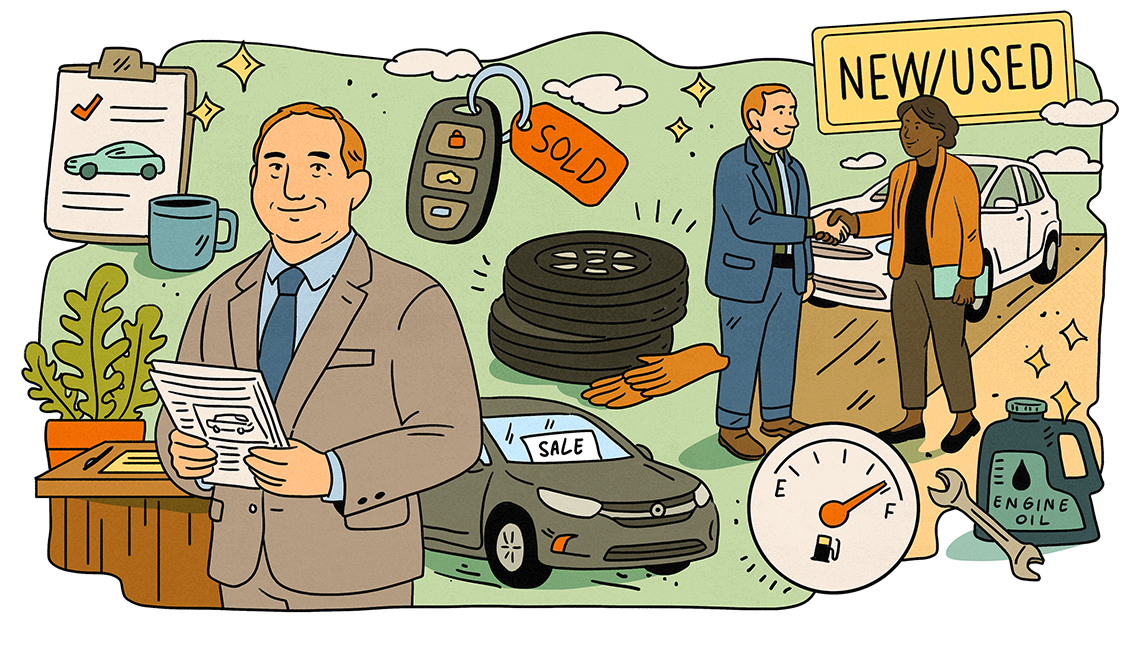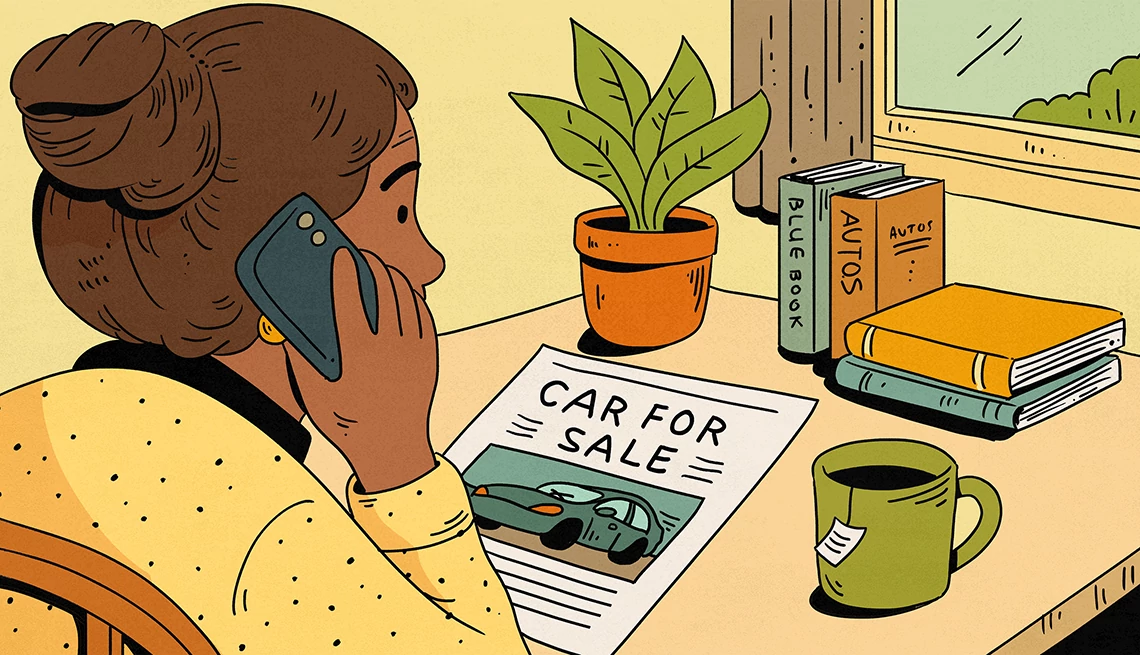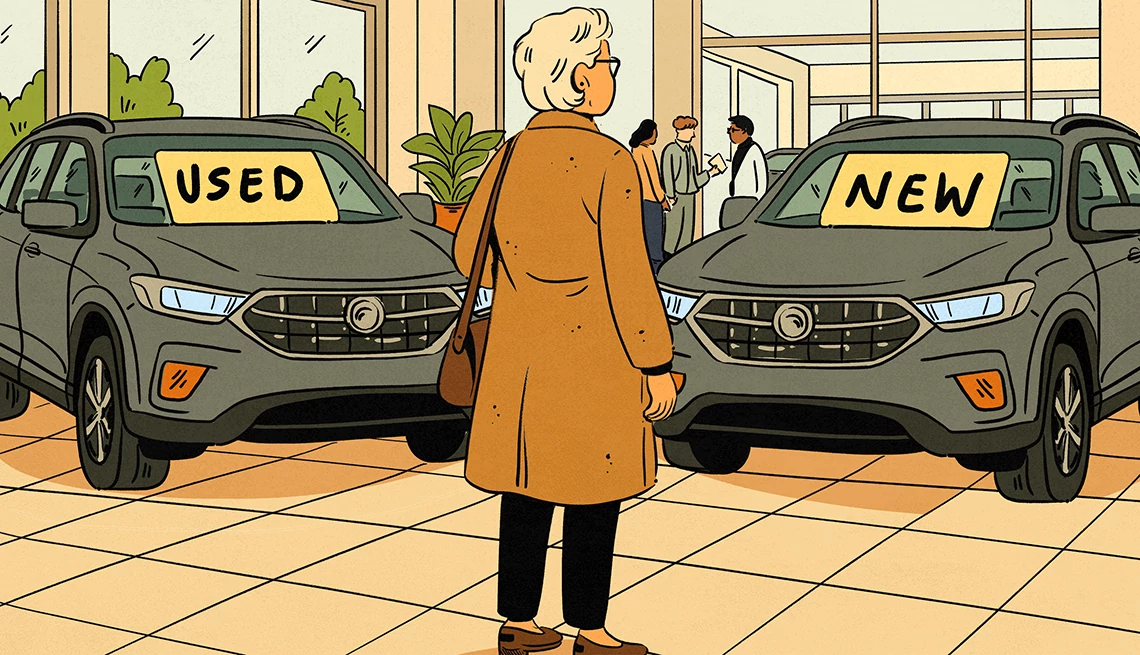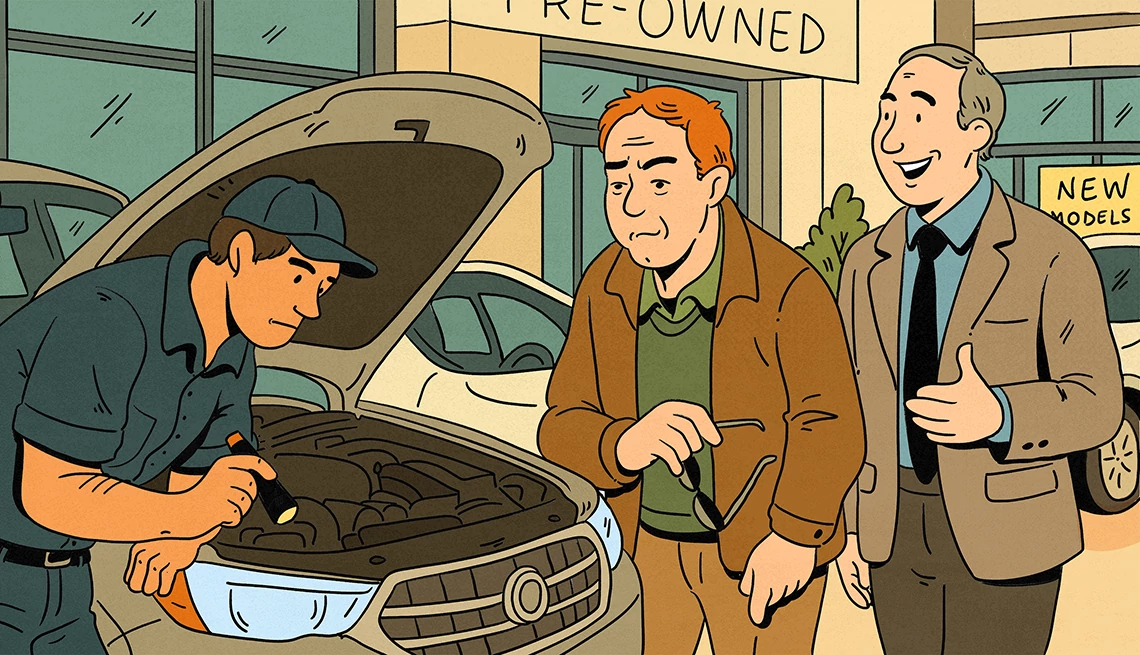AARP Hearing Center


Buying a car can feel like stepping into a high-stakes game of chess when you’re not exactly sure how to play. Salespeople can use confusing terms, pressure you to make on-the-spot decisions or say yes to add-ons that they swear you need. With so many moving parts, going in with a strategy can save you time, money and stress.
Who better to ask how to go into a dealership prepared than a former car salesman? We chatted with Andrew Einhorn, executive sales consultant with LuxConcierge, a team of car brokers that helps buyers find the best deal on the car they want.
Einhorn drew on his 18-year history as a salesman at car dealerships to bring you these 17 insider secrets. Read on for tips, in his own words, on how to navigate the process like a pro and walk away feeling good about your new set of wheels.


That deal you saw an ad for might be a bait and switch
You might see an ad from a dealership in the newspaper or online offering the exact car you want at a great price, prompting you to make a trip out to the dealer. But once you arrive on-site, be ready. The car salesperson might tell you that the particular color, make and model you saw in the ad isn’t available anymore. They used to call that “selling the ad car.” In those situations, sales associates could actually get in trouble if they sold the car at the price they were advertising and didn’t switch you to something else. While this tactic is not as common nowadays, it’s still something to watch out for.
If you see a specific car that you want to test-drive, call the dealership ahead of time to confirm they have it in stock before making the trek out there. They should be able to confirm that it’s available over the phone. They can even pull it out of the lot to have it ready when you come in, saving you both time. Most dealers will also have their inventory updated on their website.
December is not the only time of year to buy a new car
We’ve all heard to try to get a new car in December — and that’s true. In December, everyone is trying to hit their year-end goals. So dealerships are desperate to get some cars off the floor, and this can be a great time to land a deal. But car-shopping in August can also be a great time to snag a deal on the current-year model, as dealers start to get inventory on the next year’s models around this time.
Stuck on whether you should buy a 2025 or 2026? If you’re leasing the car, it doesn’t matter as much what year it is, because you’re going to give it back. If you’re buying, purchase closer to the beginning of the model year. If you were buying a 2025 right now, you’re already taking a one-year hit of the depreciation (unless you can get a discount that makes up the difference).
Know what you need — and what’s legal — when it comes to warranties
We tend to think of the car’s price tag as being the big sales pressure push, but a lot of dealers put their sales hat on when it’s time to talk about financing. If, when you’re doing the paperwork, the finance manager says the bank requires you to buy this warranty, or that if you buy this warranty you will get a lower interest rate, that may be incorrect and even illegal for them to claim that. Don’t be afraid to call the dealer out on this by asking them to explain the specifics.
Not buying in person can save you some hassle
Buying a car doesn’t have to mean visiting a showroom, test-driving, then sitting for hours in a dealer’s office while you haggle over prices, not to mention the piles of physical paperwork to sign. You can actually work out the transaction over the phone. I’ve closed many deals over the phone. You can also purchase through services like Carvana, CarMax and the Costco Auto Program, where you can lock in deals virtually. It can also be convenient to use the services of a car broker, like me, who, for a commission on the sale, serves as the middleman between the client and the dealer to make the process run more smoothly.




































































You Might Also Like
Get More Mileage Out of Your Car
Auto repair tips to get more life from your car
25 Great Ways to Save on Car Costs
From car-buying to insurance to maintenance, here’s how to spend less on your vehicle
Insider Secrets From a Top Car Mechanic
Top tips to avoid getting ripped off